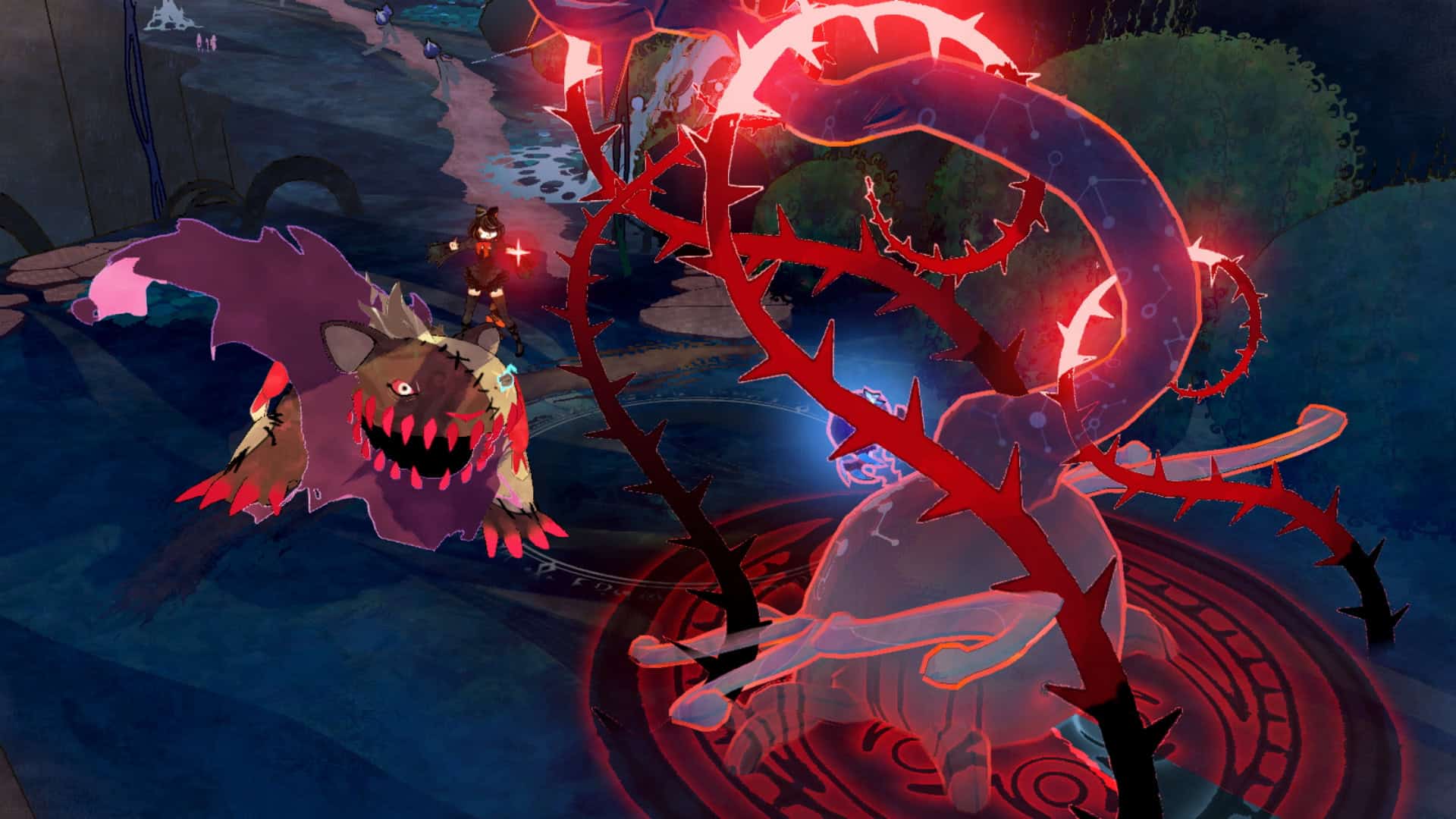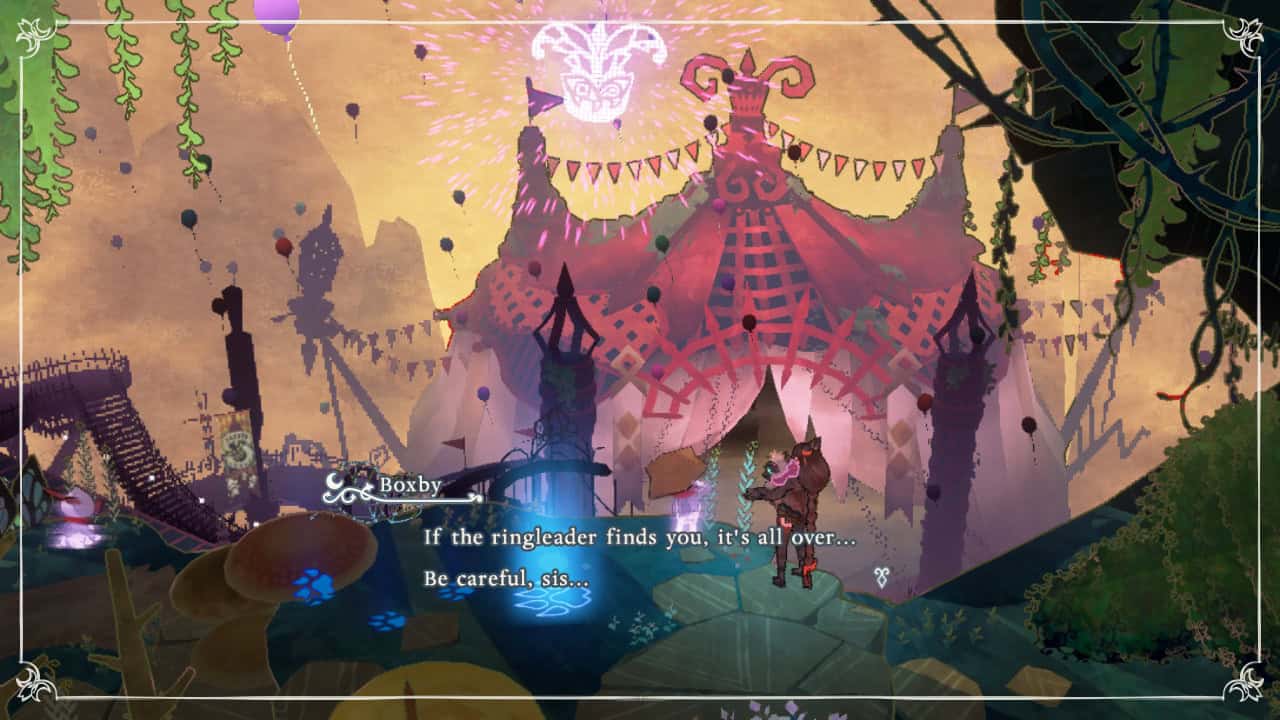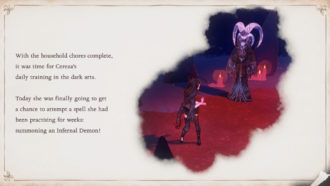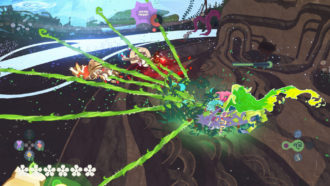Platform:
Nintendo Switch
Released:
March 17, 2023
Publisher:
Nintendo
Developer:
Platinum Games
As female video game characters go, Bayonetta is one of the most iconic. Sure, she’s overtly sexualised, but it’s hard for me to care too much about that when she kicks so much ass. She’s confident, unapologetic, and awesome as hell. Well, that’s her as an adult; the various flashbacks and appearances of the younger Bayonetta – Cereza – paint the picture of a nervous, lonely, defenseless child. So how does one grow up to be the other? Bayonetta Origins: Cereza and the Lost Demon answers some of our questions with the heartwarming and whimsical tale of the first demon she ever summoned.
Bayonetta Origins: Cereza and the Lost Demon will spoil much of the plot of Bayonetta 1, as it begins with an explanation of the circumstances of Cereza’s birth and her subsequent ostracisation from Umbran society. An extra chapter unlocked after finishing the game will also spoil part of the finale for Bayonetta 3, so I recommend playing those before starting Bayonetta Origins. The story, told through storybook-style narration, begins with Cereza dreaming of a boy who needs her help against the malevolent faeries of the nearby Avalon Forest. Although she is scared of venturing alone into the forest, she is tempted by a promise to help her obtain enough magic power to break her mother from her eternal incarceration. You control both Cereza and her demon companion Cheshire simultaneously as you navigate the faerie forest full of enemies and environmental puzzles.
It’s strange to see the young Bayonetta acting so unsure of herself, but it understandably serves to set up her character growth later on. Her voice actress, Angeli Wall, strikes an excellent balance between excitable and nervous, which are Cereza’s two main character traits throughout the story. She’s absolutely adorable, and I could listen to her charming British accent all day. Most other voices are performed by the narrator, who shifts her voice in pitch to suit each character as if she were reading a bedtime story to a child. It’s a cute effect, and the narrator has enough range to make it work.

Because Cereza is still in training, she hasn’t yet learned how to do any of the flashy combat moves we’ve seen in the main games. In fact, there’s barely anything she can do; she can activate certain plants and machinery by performing a simple dance, which is used for exploration and puzzle-solving, and she can bind enemies in place with thorned vines, which buys her a bit of time to put some distance between herself and enemies.
Her only means of defending herself is the one demon she has managed to summon, who has possessed her stuffed cat, Cheshire. Not knowing how to send the demon back to Inferno, she and the demon are stuck together for the remainder of the adventure, and slowly begin to form a bond with each other.
There is an innate difficulty in having two characters to control at once, which is good, because the combat is otherwise surprisingly easy. I don’t need a game to be difficult to enjoy it, but the limited array of attacks Cheshire and Cereza can perform makes the combat feel one-note after too long. You can’t even increase the difficulty until you complete at least one playthrough, although you can decrease it if you need.
While Cereza avoids enemies and paralyzes them with her vines, Cheshire deals damage. There’s only one main attack button you’ll be mashing the whole time, which is not exactly riveting. Yes, there is a skill tree you can use to spice things up a little, but it doesn’t open up the combat that much. As Cheshire gains the ability to switch between the elements water, earth, nature, and fire, things become a bit more interesting, but they are almost all just variants of the basic combo. The few bosses in the game still have cool set pieces, but I wish some of that creativity could have been spread out to some more common enemies.

I don’t mind, though, because Bayonetta Origins focuses its efforts elsewhere. Specifically, every ounce of its effort has gone towards the look and feel of its world. Starting with Cereza herself and the other characters; they are stunningly designed and beautifully rendered in this storybook style, which perfectly suits her childish personality. She peppers the game with comments constantly, but far from being annoying, it endeared her to me tremendously and made up for some slow pacing towards the middle of the game. When you don’t need Cheshire out and about, he retreats to the form of a stuffed animal which Cereza clings to her chest as she continues to explore — oh, it’s just so cute!
Next is the fantastical and magical world of Avalon Forest. The forest is the home of faeries, but not the benevolent kind; these are the malevolent little shits of folklore, who lure kids to their doom with sweets and songs. The storybook aesthetic was a great choice for this setting, as the environment gets to switch between lush, beautiful plants and flowers to strange structures and menacing carnivals. It manages to be the perfect mix of whimsical, dangerous, and even a bit lonely. This is why I enjoyed most of my time with the game exploring for secrets and finding hidden treasures. Exploring will also reward Cereza with difficult challenges called Tír na nÓg stages, which contain the more complex and interesting puzzles that utilise the simultaneous controls to their fullest.
The exploration is a bit like a Metroidvania, in the sense that there will be many areas of the map that are inaccessible until you get the right ability. There are plenty of rewards around to tempt you to backtrack, but doing so will put you at odds with the game’s twisting and confusing layout, which is not helped by a map that doesn’t allow you to properly keep track of where you’re going. You can only fast-travel from certain points, too, which adds tedium to the confusion. Exploring Avalon Forest was magical the first time, but as I completed the game, my will to backtrack and collect everything I had missed was dampened by how slow and confusing I knew it would be to navigate through again. It’s absolutely a shame, because the forest is chock full of tiny hidden places and other things to find.
“… the perfect mix of whimsical, dangerous, and even a bit lonely.”
Hidden around the place are Wisps, which are little ghost-like children who lost their lives in the forest. Find enough of them and their leader will give you some useful rewards, but far more entertaining is that each one has its own character page in the archive, complete with a whimsical description. For instance, the little guy called ‘Rattles’ is listed as having a height of ‘Dashingly tall’ and a weight of ‘Some roses and chocolates’. I loved finding these little guys, and I wanted to find them all, but I just wasn’t willing to contend with the frustrating map.
Bayonetta Origins: Cereza and the Lost Demon gets my recommendation to Bayonetta fans who care about more than just the action. At the very least it’s yet another decent exploration game for your Nintendo Switch collection, and I’m confident its charm will outweigh any grievances with slow pacing and samey combat.
7.5
Good
Positive:
- Stunning and unique storybook art style
- Filled with atmosphere, charm, and character
- Interesting environmental puzzles
Negative:
- Combat is far more simplistic and easy than expected for a Bayonetta title
- The map is annoying to backtrack
Bayonetta Origins: Cereza and the Lost Demon is a quirky little diversion from the main series. Replacing swift combat with slow-paced exploration and puzzles, it’s quite a different attraction. I love the storybook illustrations and narration, and exploring the atmospheric Avalon Forest with Cheshire’s various abilities was great fun. Issues with the forest’s discouraging mazelike map and the simplistic combat are easily trumped by the oodles of character and charm offered by this whimsical spin-off.











